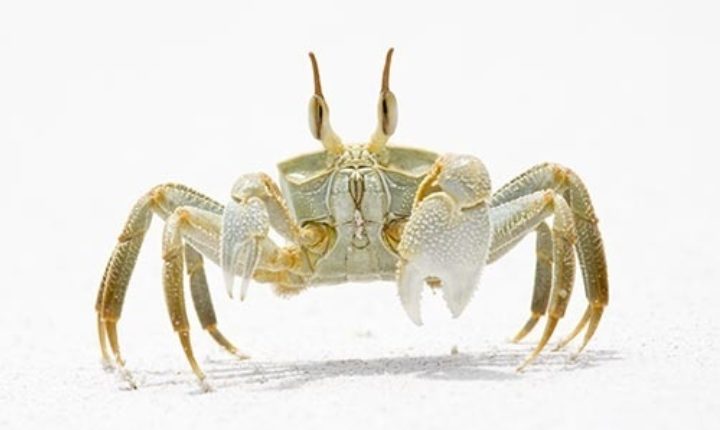April 2013: The Ghost Horned Crab
Published on 1st April 2013
Colour change and camouflage in the horned ghost crab

Article first published in the Biological Journal of the Linnean Society on 2nd April 2013
Scientists have published findings in the Biological Journal of the Linnean Society demonstrating that juvenile horned ghost crabs adapt their appearance from day to night for camouflage.
The results of the study, which was carried out by Dr Martin Stevens, working for the University of Cambridge
and colleagues from the National University of Singapore, found that this particular species will fine tune its colour or brightness to mimic its background. Throughout the study the crabs consistently became lighter in the daytime and darker in the night, in doing so their camouflage to the sand upon which they live was greatly improved. These findings were only found to be true for juvenile horned ghost crabs as they have a translucent shell.
The horned ghost crab, Ocypode ceratophthalmus, can be distinguished from other related crabs by their extending eyestalks. This species of ghost crab is distributed throughout the Indo-Pacific region from East Africa to the Philippines and the Great Barrier Reef.
Coverage:
The Biological Journal of the Linnean Society - Wiley Online
(Image: Horned Ghost Crab on White Sand, Shutterstock)
